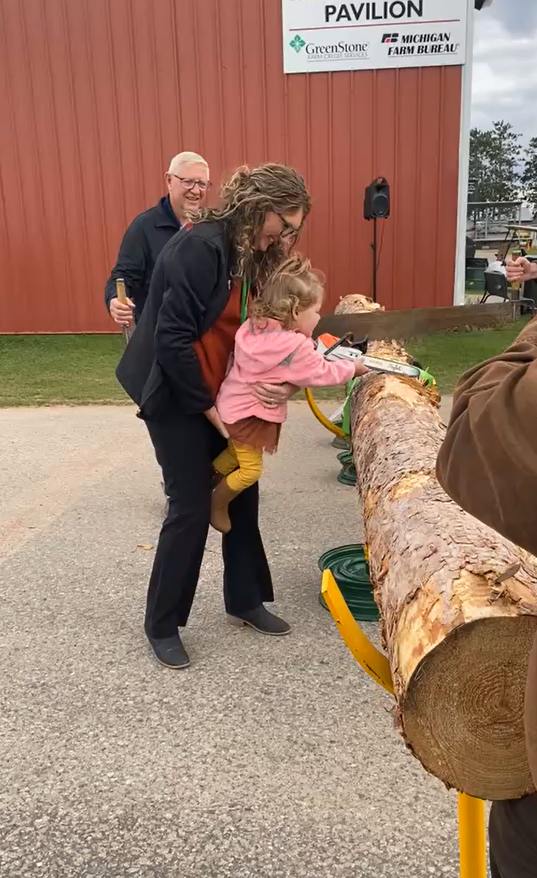Feature Article

2025 Great Lakes Logging & Heavy Equipment Expo Recap
On September 4th – 6th, GLTPA hosted it’s 79th annual Logging & Heavy Equipment Expo at the U.P. State Fairgrounds in Escanaba, Michigan. With a mixture of rain, wind, sun and clouds, the weather did not deter a record number of exhibitors and attendees to show.
About 750 registered exhibitors filled 300 booths both indoor and outdoor. Outdoor displays included large logging equipment, heavy trucks and trailers, track manufacturers, sawmills, firewood processors, skid steer, brush cutters, chainsaws, stoves, carvers, tires, and much more! The Roland/Komatsu Forwarder Operator Challenge and the BARKO Loader Skills Contest displayed skills of the best in the Lake States region. New highlights this year included Midwest Truck Driving School’s pole climbing opportunity, the Wisconsin & U.P. Chainsaw Racing contest, and the opportunity to enjoy a Logger Breakfast on Saturday morning hosted by local Knights of Columbus.
Indoor displays filled the Ruth Butler building and surrounding areas. Attendees could find lubricants for all types of needs, insurance, landowner services, hydraulics, tools and supplies, communication equipment, financial guidance, safety equipment and gear, sawmill supplies and repair services, machining services, steel and concrete supply, tracks, chains and blades, tires, educational and creative opportunities, and even 2025 Expo merchandise!

On Thursday evening the Opening Ceremony took place outside of the Miracle of Life Building and welcomed a special little girl named Everly, along with her family. Everly’s mother, Tricia, shared their experiences with Children’s Miracle Network hospital, Children’s Wisconsin, and told how the Log A Load For Kids program impacts patients and families like theirs. Then Everly and her parents took part in the ceremonial “Log Cutting”, which symbolizes the opening of the Expo. Immediately following was the annual Kickoff Event which featured Elmer’s famous catered dinner with pie and ice cream for dessert. There were wonderful bucket raffles and silent auctions with wonderful prizes donated from very generous exhibitors, businesses, and supporters of Log A Load For Kids. The evening raised a total of $7,064 which will be presented to seven different CMN Hospitals in Michigan and Wisconsin.
The following two days of the Expo saw a record number of attendees, students, and participants. Mike Monte, our photographer and writer, gives you a closer look at his time spent at the show.
